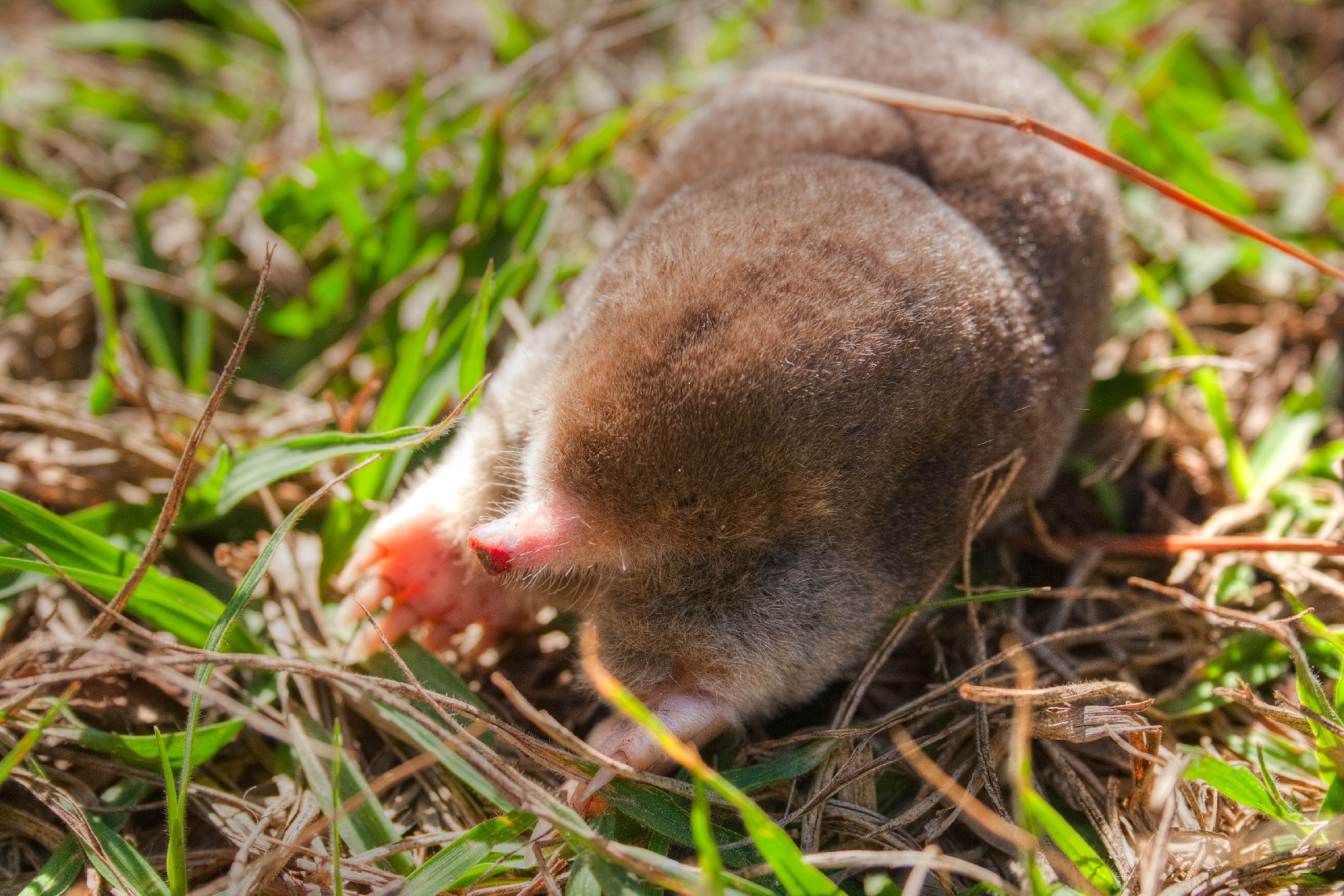Eastern mole
A species of Eastern moles, Also known as Eastern aquatic mole Scientific name : Scalopus aquaticus Genus : Eastern moles
Eastern mole, A species of Eastern moles
Also known as:
Eastern aquatic mole
Scientific name: Scalopus aquaticus
Genus: Eastern moles
Content
Description General Info
Description
The eastern mole is a small, sturdy animal which lives principally underground and is highly specialized for a subterranean way of life. Its body is somewhat cylindrically shaped with an elongated head. A fleshy, moveable snout projecting over the mouth with nostrils on the upper part is used as an organ of touch. The minute, degenerative eyes are hidden in the fur; the eyelids are fused and sight is limited to simply distinguishing between light and dark. The ear opening is small and concealed in the fur, but hearing is fairly acute. A short, thick tail is lightly furred and is used as an organ of touch, guiding the mole when it moves backward in the tunnel. The very large front feet are broader rather than long with well-developed claws, and possess a specialized sesamoid bone attached to the wrist that aids digging. The front feet are normally held in a vertical position with the palms facing outward. Both the front feet and the small hind feet are fringed with sensory hairs that help the mole in its excavations. The bones of the front limbs and the breast are hugely enlarged, and provide strong support for the attached muscles used in digging. The hip girdle is narrow, permitting the mole to turn around in its tunnel by doing a partial somersault or doubling back upon itself. The mole has grey-brown, plush like fur with paler or browner underparts, and may appear to have a silver sheen depending on the angle it is viewed. The fur offers little resistance to backward movement in the tunnel. Compared to the female, the male tends to have a brighter orange strip on the belly being caused by secretion of skin glands in the region. Albinos occur but these may appear white, orange, or cinnamon yellow depending on the skin gland secretion. The face, feet, and tail are whitish to pink. Molting occurs in the spring and fall with the new pelage appearing first on the underparts. On the back, the new fur appears first at the tail then works forward. A distinct line usually marks the old and new fur, and there is no distinct underfur. The hairs are of equal length, and, when viewed microscopically, are seen to possess a whip-like tip unlike the hairs of any other mammal. The sexes are determined externally by the number of openings in the groin area: the female has three – the forward one is the urinary opening (in the urinary papilla or projection), the second is the vagina, and the third is the anus at the tail. The male has two openings – the combined urinary/reproductive opening in the penis, and the anus. The testes never descend into a scrotum but remain within the body cavity. There are six teats on the belly – a pair at the chest, a pair at the groin, and a pair between the two. A rank, musky odor is emitted from a scent gland on the belly, and is left on the floor of the tunnel as the mole passes. It probably serves as a form of communication between the sexes during the breeding season, and to discourage predators. Other scent glands are found at the anus. 
General Info
Lifespan
3-6 years
Diet
Eastern mole, commonly known as the eastern mole, feeds primarily on invertebrates, particularly earthworms. This species also consumes beetles, ants, and other small insects, demonstrating a preference for soil-dwelling fauna.
Appearance
Eastern mole is a small, cylindrical mammal with a streamlined body. It has a dense, velvety fur that is generally brown to black. Eastern mole features elongated claws, used for burrowing, and has a pointed snout. It lacks external ears and eyes are tiny. No significant differences in appearance due to age, gender, or subspecies have been observed.
Behavior
Eastern mole is a solitary, crepuscular mammal that spends most of the day sheltered within intricate burrow systems. Primarily insectivorous, it uses a keen sense of smell to find food, employing an echolocation-like clicking noise for localization. Its behavior includes dramatic self-anointing by salivating onto objects and vigorously rubbing them on its body. These territorial creatures do not actively defend their territory but will engage in aggressive confrontations if needed.
Population
Stable
Scientific Classification
Phylum
Chordates Class
Mammals Order
Soricomorpha Family
Talpids Genus
Eastern moles Species
Eastern mole 